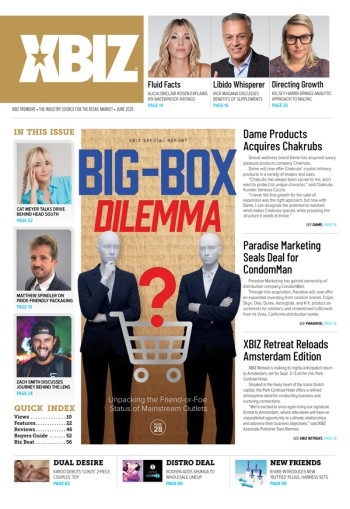There is a lot of confusion and fear at the moment about Google’s latest forays into ad-blocking that recently launched — specifically, the native built-in ad blocker in Google Chrome. It has, among other things, led to rumblings in both the European Union (EU) and the United States about breaking up Google, as well as the suggestion of an impending antitrust fight.
European Commissioner for Competition Margrethe Vestager says she’ll monitor Google’s ad-blocking efforts, so it is clearly not just publishers and advertisers who are concerned. The EU may object, for anti-competitive reasons, to Google bundling its ad blocker into Chrome, so the whole project may change as a result.
Given that existing ad-blocking frequently affects other website elements, it’s possible that Google’s efforts with Chrome may unintentionally damage sites and cause additional unforeseen issues.
After all, it was things like the inclusion of pre-installed software with Windows that landed Microsoft in antitrust court years ago, and arguably led to the rise of Apple. Google may want to avoid the same fate.
The Chrome announcement included several key points that may help clarify the situation:
Chrome plans to increase the blocking of ads on websites that display a large number of bad-quality ads.
Chrome has already been giving notice before blocking advertising for publishers running pop-up ads. Chrome blocking will affect publishers who choose advertising networks with low quality standards or networks that allow publishers to “opt in” for Google non-compliant ads. Any moment, Chrome could turn off those ads.
Websites that may face ad blocking are those not compliant with Coalition For Better Ads standards.
Thankfully, our network, JuicyAds, has taken a hard line on these types of ads and we don’t allow them. Instead, we have pushed advertisers to provide us only with compliant ads that are also of quality. Compliance required the re-review of every single image in our network. It was a lot of work, but we did it so that our publishers don’t have to worry. We went even further and allowed publishers to block any campaign from their websites with just a copy-and-paste of the ad link.
Google released a tool called the Ad Experience Report that will warn publishers of any ads that violate the Coalition’s standards.
While this may sound like a good thing on the surface, the guidelines for “compliant” ads remain in the power of someone else. Even though we firmly believe that publishers should be in charge of running their websites and choosing what types of ads are acceptable, this is a crucial component to staying compliant. Since we expect the guidelines may change over time, if you ever receive alerts from the Ad Experience Report (AER), you should take action immediately to notify your chosen ad network and inform them of the specific issue.
Additionally, the Ad Experience Report API was provided by Google to let developers build applications that query Google AER. The API gets a list of sites that have ad experiences that might violate the Better Ads Standards, or that have egregious ad experiences. The response also contains a link to the full AER for publishers to get more details.
The Coalition for Better Ads is based on comprehensive research.
The research involved more than 25,000 consumers who identified the ad experiences that ranked lowest across a range of user-experience factors, which correlated with consumers adopting ad blockers. So, publishers choosing a compliant network may reduce the number of visitors who wish to block their ads. These research results are what defined the initial Better Ads Standards. Four types of desktop web ads and eight types of mobile web ads fell beneath this threshold. In addition, consumer input also identified those experiences that were more preferred by consumers.
It is unclear how far the Chrome blocking will go.
There is a concern that the Chrome blocking may also block stats, analytics and other third-party code on your websites, like plugins or widgets. Given that existing ad-blocking frequently affects other website elements (and publishers are often unaware of how their websites function behind aggressive blocking) it’s possible that Google’s efforts with Chrome may unintentionally damage sites and cause additional unforeseen issues. These types of problems are why we launched AdBlockingSucks.com and provide the WizePandas ad-unblocking solution with One Click Consent(TM) to help publishers make their ads function again for visitors who opt in.
Impact on ad blockers
With all the fear-mongering about malware and “bad ad experiences,” the ad-blocking market is becoming very similar to the antivirus market. When Microsoft bundled Windows Defender for free into every copy of Windows, many wondered about the future of other antivirus products in the marketplace. Years later, other antivirus companies appear healthy and are still going strong.
We predict a similar dynamic will play out in the ad-blocking market. Overall, Google’s built-in ad blocker should end up being “just another” ad blocker that is on the market, alongside all the others, with its own set of pros and cons. Many users will adopt it. Existing users will likely continue using their existing ad blockers. Other ad blockers will still gain new users, especially those users who want stronger blocking than what Google is likely to offer. We will continue to provide solutions to unblock all of these ads successfully with WizePandas.
We feel it is unlikely that Google will support a method to block all ads.
Because Google would otherwise have complete control over who gets blocked (and why), there will always be a need for an independent voice to determine what gets blocked, such as the current set of “EasyList” ad-block filters. To be clear, we support blocking malicious ads and tech support scams and the like. However, we strongly oppose Google and Chrome blocking publishers who have ads that simply are “annoying” to visitors.
No matter what company comes up with the next shiny and new method to block legitimate advertising by publishers, there will always be a growing need for publishers to adopt ad-unblocking services. It’s an arms race, and publishers must win it — otherwise, the free internet will fall, and that means we all lose.
Juicy Jay is the CEO and founder of JuicyAds, the Sexy Advertising Network. You can follow Jay on Twitter @juicyads, JuicyAds.com or Facebook.com/JuicyAds. Read more about ad-blocking solutions at AdBlockingSucks.com.





